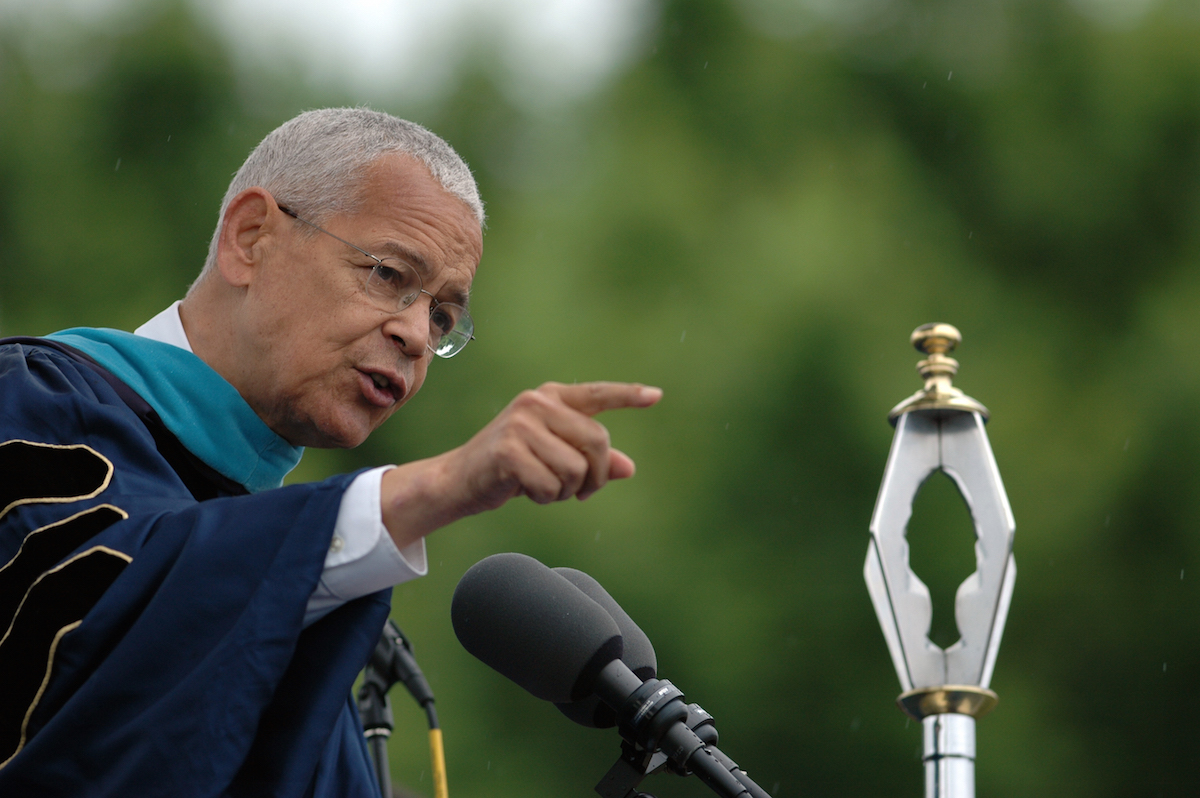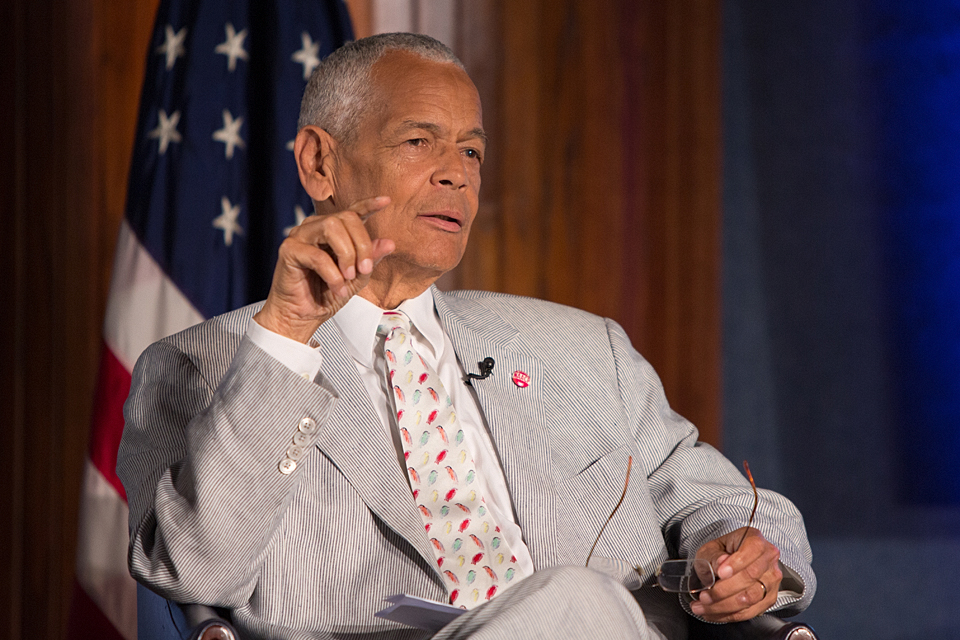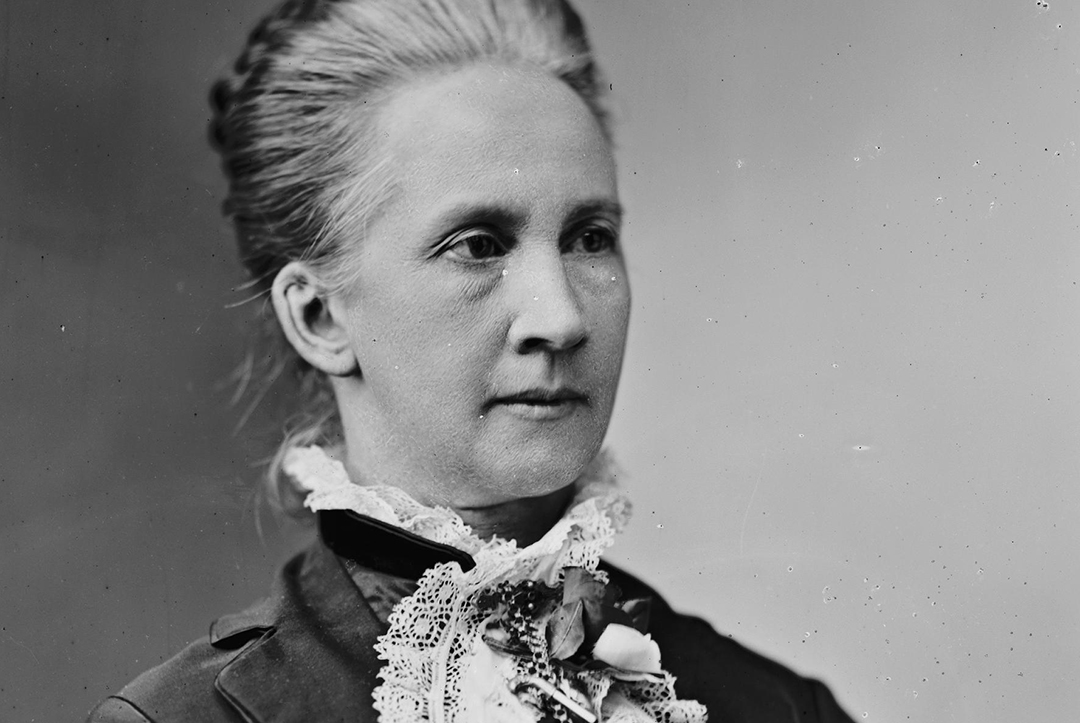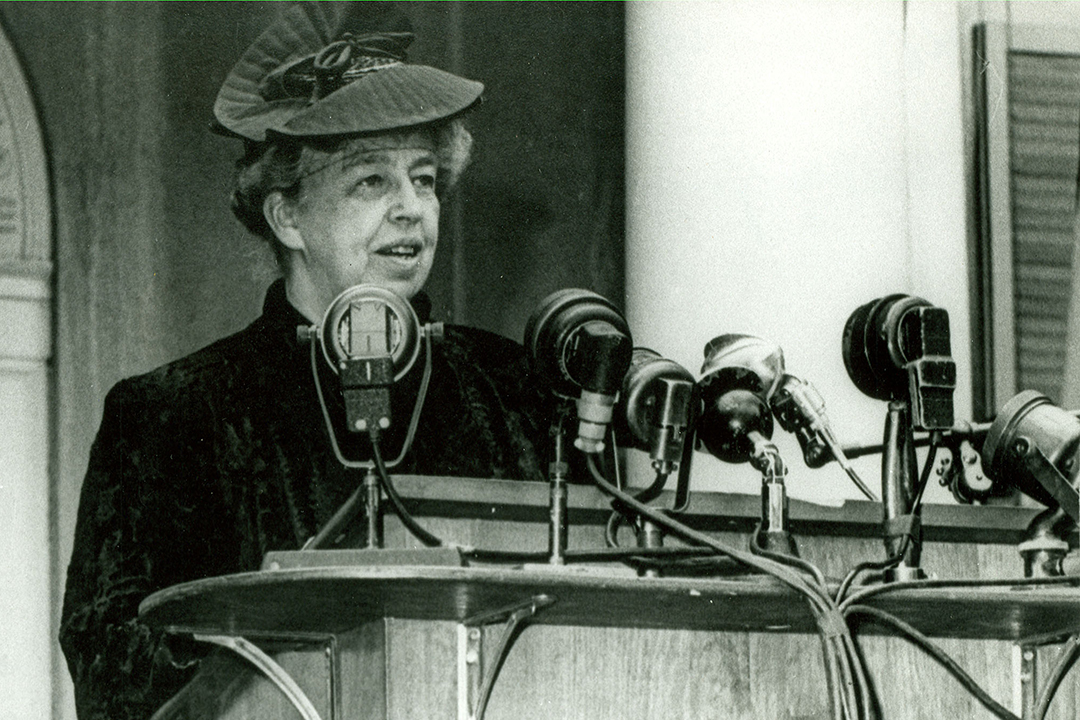Editor’s Note: “In Their Own Words” is a GW Today audio feature showcasing the voices of historical figures with ties to the George Washington University. Every month, GW Today will bring those characters’ words to life through archival recordings or interpretations by members of the GW community. If you have a suggestion for a featured voice, let us know at gwtoday gwu [dot] edu.
gwu [dot] edu.
By Ruth Steinhardt
Julian Bond was just 23 years old when he attended the March on Washington for Jobs and Freedom in 1963. Then communications director for the Student Nonviolent Coordinating Committee, Mr. Bond watched Martin Luther King Jr. deliver his iconic “I Have a Dream” speech before a crowd of about 250,000.
In 2008, Mr. Bond recalled the occasion in his Commencement address to the George Washington University. The speech was delivered at what Mr. Bond called “an historic time”: 45 years after the march, 40 years after Dr. King’s death, and less than a month before Barack Obama would become the first African American presidential nominee for a major political party.
You graduate at an historic time and in an historic place. Forty-five years ago, more than a quarter of a million people gathered here on this Mall to march for jobs and freedom and to hear the Rev. Dr. Martin Luther King tell the nation of his dream. Black people’s passage to this country was on slave ships. Their passage to citizenship occurred on that day and in this place.
I then worked for the Student Nonviolent Coordinating Committee, better known as SNCC, as their communications director. My organization was founded only three years before the march and was the youngest sponsoring organization. The National Association for the Advancement of Colored People, whose board I chair today, was the oldest organization, dating back to 1909.
As a representative of the youngest sponsoring organization, my job at the March on Washington was to bring Coca-Colas to the movie stars. My most compelling memory of that day was giving a Coke to Sammy Davis Jr. and having him say, “Thanks, kid.”
The first speaker that day was 74-year-old labor leader Asa Philip Randolph, who devoted his life to jobs and freedom. The march had been his idea, and he later called it the most beautiful and glorious day of his life. The last speaker, of course, was Dr. King. His speech that day cemented him and the civil rights movement in America’s consciousness.
It was also here in Washington, at the National Cathedral, where Dr. King on March 31, [1968], five years after the March on Washington and 40 years ago, delivered his last Sunday sermon. Four days later he would be assassinated in Memphis. He now has been dead longer than he lived.
Today, we have encased the man and the movement in myth. As King biographer Taylor Branch recently said, “To see King and his cohorts as anything less than the modern founders of democracy—even as racial healers and reconcilers—is to diminish them under the spell of myth.”
I hope, graduates, that as you contemplate what you receive when you are handed your diplomas, you will think of these modern founders of democracy and of the tens of thousands of others who experienced the tragedy and the triumph that is the history of our national struggle to come to grips with the unresolved problems of race. And I hope you understand that this struggle has everything to do with you.
When the Supreme Court outlawed segregation in 1954, a vast army of nonviolent protesters rose up to challenge segregation’s morality as well. Students like you began embracing “jail without bail” when they sat down to stand up for their rights. They attacked segregated interstate travel with their bodies and segregated ballot boxes across the South as well.
Through this period the federal government helped only reluctantly, and then only when white property or people seemed to be at risk. State and local governments worked in active concert with white terrorists, and the movement had few allies.
But from the first it was a people’s movement, made up of ordinary women, ordinary men. The cumulative acts of their passive resistance became our modern democracy’s finest hour.
By 1965, Jim Crow was legally dead. A voteless people had voted with their bodies and their feet and paved the way for other social protests. The anti-war movement of the 1960s drew its earliest soldiers from the Southern freedom army. The reborn movement for women’s rights took many of its cues and much of its momentum from the Southern movement for civil rights.





